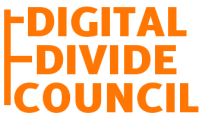Top Five Digital Divide Solutions
The interaction between people and computers has increased in the past two decades as technology advances. The ability to access computers and internet has become crucial for society. Unfortunately, people still lacks access to modern technology and the internet.
What are the solutions to the digital divide?
First, are there any possible solutions to the digital divide? Well, yes there are. To decrease the digital divide gap, we must tackle the problems of poverty, low education levels, and poor infrastructure. Below are solutions that can help narrow the digital divide gap.
1) Increase affordability
One of the chief internet adoption barriers in both developed and developing countries in the world is affordability. A large group of people cannot access the internet because of the high costs involved. The cost of smartphones and laptop computers are expensive, despite technology being a basic need. Taxes, patent fees and electricity are contributors to the high prices of technology. To help this, we can offer financing to help lower income earners afford new technology. Governments can give tariff subsidies to encourage them to buy these digital tools.
2) Empowering users
To see the full potential of the internet and its impact on the world, we must take advantage of it’s capabilities. Most of the people who use the internet have a limited understanding of some of its use cases . For instance, Google helps people find information that they would not have access to. An issue that broadens the digital divide is ‘participation inequality’ where users lack the skills to use it.
Since user data is used in decision-making, the data collected may not be suitable enough for proper decision making hence leading to poor decisions that may lead to huge consequences. To avoid this, the public needs to be educated on the benefits and value of utilizing the internet and the various resources within it to achieve economic and social growth. Furthermore, the public should be encouraged to share opinions and any other relevant user data online to aid the government and other organizations make informed decisions that serve the people’s needs better.
3) Improve the relevance of online content
According to research, the top barrier to internet penetration in developing countries is relevance. This is because, in most cases, people cannot find content, online services or web and mobile applications in their primary language. Moreover, most people in rural areas lack the necessary prerequisite education to understand a lot of online content.
To encourage internet adoption in such places, local content and applications need to be developed in local languages that can be understood by the local populace. Besides to this, privacy, trust, and data security issues that tend to scare away many potential users need to be addressed by formulating policy frameworks that ensure online websites protect their users’ data and online activity .
4) Internet infrastructure development
The internet relies on infrastructure to relay information between two or more computers located in different parts of the world. Lack of proper internet infrastructure, which is the case in many 3rd world countries, means either poor internet connection or no internet connection at all in those parts of the world.
With the inception of the broadband internet which is much faster and reliable than the traditional dial-up connection, this challenge has become even more pronounced especially in rural areas. This is because of the costly nature of the systems and technologies that relay broadband internet making it uneconomical to establish in rural areas. Luckily, large-scale cost-effective solutions that are suited for rural environments have been developed such as the use of satellite broadband technologies, drones, and earth-orbiting balloons.
5) Address gender gap in internet access
Statistics on internet usage carried out in 2016 showed that there are 250 million fewer women online than men. The majority of these women live in Africa and the Arab states. This means that in order to overcome the digital divide, a special focus has to be placed on women to bring their usage closer to or at par with that of men.
The fact that in low and middle-income countries there are more women without mobile phones than men further exacerbates the problem. The effort to close this gender gap lies squarely on both government and non-governmental organizations which must partner up and work together. Addressing the issues of poverty, relevance and public awareness will also considerably address the plight of women without access to the internet.
Conclusion
In summary, the problem of the digital divide is just a symptom that points us to a much deeper problem in our economic development. And this is a problem that characterizes both the developed and underdeveloped nations in the world. Once the economic challenges of low education levels, poor infrastructure development, and low quality of life/ income levels are addressed, the digital divide will be eliminated.
Learn More About the Digital Divide:

